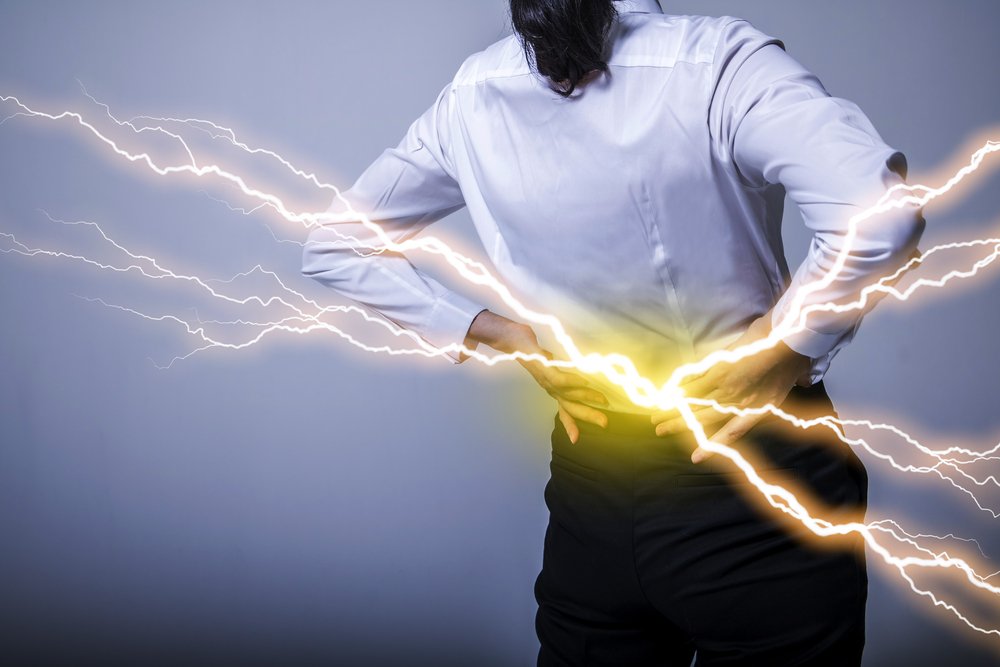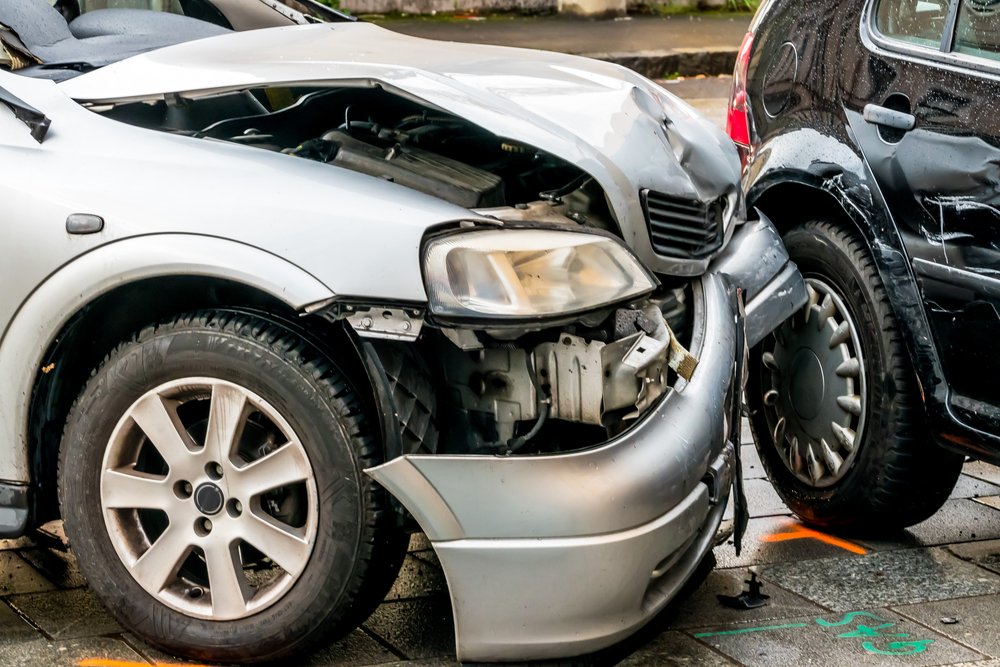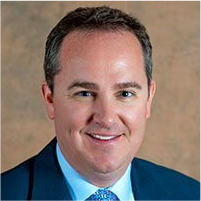Car accidents can result in a number of injuries, but back injuries remain among the most common complications that people tend to suffer. Around 3 million people are injured in car accidents every year, with about 10% of all vehicle occupants who survived crashes with even minor injuries sustaining permanent medical impairments. It is not easy to recover from a back injury, and you deserve to be compensated for your pain after an accident.
At The Law Place, we have over seventy-five years of collective experience when it comes to helping people who are suffering back pain after a car accident throughout the State of Florida. Our law firm has successfully recovered compensation on behalf of hundreds of clients who have suffered lower back pain and many other types of injuries following a car accident.
If you are experiencing lower back pain after a car accident, then you should get in touch with one of our car accident lawyers now. We can help you to win compensation for your injuries, pain and suffering, property damage, lost wages, and more.
Contact The Law Place on (941) 444-4444 to schedule a free consultation today.

Reach out to our team today for help filing a claim for lower back pain after a car accident.
Car Accidents Have a High Risk of Causing Neck and Back Injury
Car accidents can be very damaging to the neck and back due to the force upon impact. The neck and back are crucial to bodily function, but they are sensitive to immediate movement and force. When a motor vehicle slams into something or something slams into a motor vehicle, it is the opposing force that causes the people in the motor vehicle to move in that direction. However, the seat belt, car door, or another type of object will stop the forward momentum of the impact. The force will generate a large amount of pressure on the neck and back.
The jerking motion caused in a car accident, also called whiplash, can result in many different injuries to the spine. The spine is not fit to handle the forces that a modern machine can exert on a sensitive bone structure.
Neck and lower back injuries can be extremely painful and debilitating for most people. The two most common pains that generate injuries in the spine area are facet joint injuries and disc injuries. We will focus on describing these two areas because they have a lot in common. If you are suffering from back pain, then you must know the differences between the two causes.


Back Pain From a Car Accident
Discogenic pain is associated with the spinal discs, and these round pieces of cartilage work as a cushion between the bones that build the spine, along with allowing movement and stability. However, the pain can be harsh when one or more spinal disc has suffered damage.
Discogenic pain happens when the condition of the spinal discs starts to deteriorate as a result of a sudden impact, like a car accident. Most people tend to experience discogenic pain in the area of the lumbar (lower) spine. Lumbar sprains, spinal stenosis, disc herniation, and degenerative spinal disorder are some of the most common injuries that cause pain.
Lumbar Sprains
Excessive force on the back, like a sports injury, lifting a heavy object, or a car accident, are some of the main causes of lumbar sprains. The trauma can cause the ligaments, muscles, and tendons in the back to stretch in an excessive manner, which is called a sprain or strain.
Spinal Stenosis
Stenosis refers to the abnormal narrowing of a body channel. In other words, spinal stenosis is the narrowing of the bone channel that is home to the spinal cord and spinal nerves. Spinal stenosis can be caused by the aging process, but it can also be caused by trauma in a car accident. In most cases, a ruptured disc or bone fragment that invades the spinal canal space applies pressure to the cord or nerves, which results in pain.
Disc Herniation After a Car Accident
A disc herniation happens when the soft filling of the disc pushes through the tough encasing. The rupture is usually not a painful experience, but the pushing out will affect the surrounding nerves, which can cause serious pain.
Degenerative Spinal Disorders
Degenerative spinal disorders encapsulate many different types of injuries and symptoms that all break down the spine and or parts of the spine as the body ages. A degenerative spinal disorder can cause a number of injuries or pains such as herniated discs, bone spurs, Foraminal stenosis, Bulging discs, Spinal osteoarthritis, Spinal stenosis, Pinched nerves, Degenerative disc disease, Spondylolisthesis, Sciatica, and Degenerative scoliosis.
Discogenic pain can happen when a person is lying still, sitting down or when a form of activity irritates the area. The pain is felt as being sharp and shooting. It can be located in the area of the damaged disc, or it might even radiate in one or both legs, the buttocks, groin, or feet. The radiation is called sciatica, and it is a very uncomfortable feeling.
The pain is usually exasperated by bending over, standing, or sitting for a short or longer period of time. However, every person will have their own trigger. In some cases, a person might find relief by lying down flat or lying in a cradled position, while another person will find relief by walking or moving around.

We’re here to serve you. Our phones are open 24 hours a day.
 We’re here to serve you. Our phones are open 24 hours a day.
We’re here to serve you. Our phones are open 24 hours a day.
Diagnosing Lower Back Pain From a Car Accident
The lumbar spine consists of 5 vertebrae with soft discs in between. There is a tough outer ring surrounding a soft nucleus for each disc. The discs are made up of water when people are young, but as we age, they tend to lose hydration and become prone to fissures and cracking, also known as annular tears. The tears result in pain and inflammation.
There are many different causes of back pain, and it is important that you get a skilled practitioner to diagnose your problem. An MRI or tomography is useful when it comes to identifying the signs of disc damage or degeneration. However, there are some degenerated discs that do not cause pain, and a doctor will have to make other tests, like discography, in order to find the problematic discs. It is important that the radiologist and spine surgeon are able to illustrate the acute trauma (an injury sustained in the accident) to the spine rather than pain in relation to degenerative disc disease.


We’re Florida’s top litigation team with over 75 years of combined experience
 We’re Florida’s top litigation team with over 75 years of combined experience
We’re Florida’s top litigation team with over 75 years of combined experience
Treating Discogenic Pain
Physical Therapy for Treating an Injury to the Spine
A physical therapist will help people who suffer from discogenic pain by moving and manipulating the back and neck, along with giving homework for the person to perform at home in order to reduce the pain and bring back movement. It might include lumbar side bending, transverse plane motion, flexion-rotation mobilization, and other exercises to perform throughout the treatment process. Physical therapy for pain in the neck and back can usually remove the person’s pain entirely and restore range of motion.
Medications
A good step in treating discogenic back pain includes anti-inflammatory medications, along with other drugs such as antidepressants, anti-epileptics, naproxen, and acetaminophen.
Non-Surgical Options
There are a few non-surgical treatments that have been successful in providing long-lasting relief, such as epidural corticosteroid injections, intradiscal steroid injections, and intradiscal electrothermal therapy. They are helpful options when it comes to resolving discogenic pain. However, if they do not provide enough relief, then surgery might be the only option left.
Spine Surgery
If you are in debilitating pain for over 3 months after an accident, then you might need to consider surgery.
Intradiscal Electrothermal Therapy (IDET) is a minimally invasive spinal surgery. The surgery cauterizes the fibers around the tear by helping to fuse and kill the distressed nerve endings. You will not be able to feel the discogenic pain when the nerve endings are dead. However, spinal fusion is the most common surgery for discogenic pain.
Remember to research all of your options and discuss your situation with a health care provider in order to choose the best course of action for you and for your family.

From the initial call to updates on your case status, we are here to get you answers.
 From the initial call to updates on your case status, we are here to get you answers.
From the initial call to updates on your case status, we are here to get you answers.
Facet Injuries After a Car Accident
The facet joints are the lesser-known part of the spine, but they are just as important. The spine moves easily due to the facet joints that are surrounded by a thick, flexible membrane that produces a viscous fluid that lubricates the joints. The facet joints facilitate the movement between each vertebra and support the overall weight of the body, along with working in conjunction with the spinal discs to create strong and controlled movement through the spine and body. In simpler terms, the role of the facet joints is to prevent the spine from moving too much in a single direction. The facet joints keep the body from completely bending backward, forwards, or sideways.
Many symptoms that relate to facet joint pain consist of muscle spams, which have the potential to force the spine out of alignment and result in back or neck pain. For example, a person might feel a muscle spasm as they bend over to pick up something, and it can freeze the joint as it slips out of place. The freezing of facet joints tends to happen suddenly and without notice.
The symptoms of a facet joint injury can vary, and they are usually confused with spinal disc problems. A facet locking syndrome can result in an abrupt, painful attack, but the problem can be resolved by releasing the frozen joint and helping to return the facets to their normal function.
Facet joint pain might also appear as a result of nerve irritation or aggravation of the joint. When something like this occurs, the nearby muscles will spasm in an attempt to protect the area from additional damage by stopping any movement.
Proper Diagnosis and Treatment for Facet Joint Injuries
A standard X-ray can show injuries to the facet joints. On occasion, a CT scan might be required to show more details of the spinal structure. A CT scan can also help to rule out other potential issues with the facet joints, rather than only taking a normal X-ray.
A physician might find it useful to introduce an injection dye in an X-ray in order to get a clearer picture of what is going on. This is also known as a facet joint block. In this case, the dye is used with a local anesthetic and cortisone to bring light to the areas of concern. A radiologist will be able to see a detailed picture of the area that is injured. However, if the other two methods are not sufficient, then an MRI scan might be required to diagnose the issues with the facet joints.
Treating Facet Joint Pain
Applying a simple cold or hot compress on the facet joint is a common treatment for pain. However, you should always ask your physician before starting a treatment. The order of treatment is usually 15 minutes of hot or cold therapy for every 2 to 3 hours, depending on the recommendations of your physician.
NSAID’s (also called anti-inflammatory), like ibuprofen, are also good to take since they reduce swelling in the affected area.
You should try to move slowly and listen to your body. If you feel a sudden pain, then you should stop what you are doing. If the pain keeps going on, then you can get a therapeutic massage to relieve the spasm, but remember to tell the therapist of your issue before you start the massage.
You can also seek the help of a qualified chiropractor. However, check that the therapist is qualified before making an appointment. Remember to give a detailed account of what happened and the pain that you are going through.
In addition, exercise has been proven to help spasms and stiffness. However, it is important that you get the opinion of a medical professional before you start. You might actually worsen the pain by exercising without understanding the extent of your injury.
How Is Back Pain Treated?
The type of treatment required for back pain will depend on whether the pain is severe (chronic) or minor (acute). We will explain the following treatments from the most acute and non-invasive to the most serious that will need surgery. A doctor will tell you if surgery is the right option in the event that a condition worsens or a corrective procedure will help to relieve the pain of the patient.
Types of Treatments for Lower Back Pain
- Hot or cold packs.
- Activity.
- Strengthening exercises.
- Physical therapy.
- Medications. Such as analgesic medications (over the counter acetaminophen and aspirin, along with prescription opioids like oxycodone and morphine), Nonsteroidal anti-inflammatory drugs (ibuprofen, naproxen sodium), Anticonvulsants (these are mainly used to treat seizures, but they can also help with radiculopathy), and counter-irritants (Bengay, Icy Hot).
- Spinal manipulation (chiropractic care).
- Nerve block therapies (injections of local anesthetics or steroids).
- Epidural steroid injections.
- Surgery.
Surgery as a Treatment for Lower Back Pain
When surgery is clearly necessary in order to improve the patient’s quality of life, it will relieve the neck and lower back pain that has been caused by car accidents or other serious incidents. However, surgery can be considered risky, but the long-term relief almost always outweighs the negative possibilities. It is not unusual for back injuries or neck injuries to reduce a person’s enjoyment of life. In this case, surgery could be welcomed. Surgery can be highly successful in relieving the pain of a patient if it is well-suited to their current condition.
A number of surgical possibilities for neck and back pain include:
- Spinal fusion.
- Artificial disc replacement.
- Vertebroplasty and kyphoplasty.
- Spinal laminectomy.
- Discectomy or microdiscectomy.
- Nucleoplasty.
- Radiofrequency denervation.
- Foraminotomy.
- Intradiscal electrothermal therapy.
How Car Accidents Cause Neck and Back Pain
A car accident will involve a large amount of physics when it comes to evaluating the overall impact on someone’s body in a motor vehicle. One of the most common causes of neck and back injuries is whiplash from a car accident. It is the speed and force of a motor vehicle in a crash that creates an intense acceleration and deceleration that the body cannot completely handle. However, these injuries can be helped through taking physical medicine or pain management intervention.
Upper and Middle Back Pain After a Car Accident
The mid-back is comprised of the thoracic spine, which is located under the cervical spine of the neck. The thoracic spine is much more rigid with biochemical support compared to the lumbar spine, which is why an injury to the thoracic spine is rare.
There are twelve vertebrae in the thoracic spine.
Whiplash Can Cause Upper and Middle Back Pain
Whiplash is not limited to the neck area. It can also cause upper and mid-back pain. Fusions and laminectomies can be done on the level of the thoracic discs, and it is not any different than the cervical and lumbar spine. However, you should explore all of your options (interventional pain management/injection therapy and conservative care) before you attempt surgery.
Kyphoplasty is another common procedure for thoracic spine surgery. It is a surgical procedure that will help a compression fracture of the vertebrae (usually the thoracic spine). Kyphoplasty is a minimally invasive course of action that will inflate a balloon in order to restore the height of the vertebrae. An injection of bone cement will keep the vertebrae where it is meant to be.
Neck Injury From a Car Accident
The acceleration and deceleration of a motor vehicle is the main cause of trauma to the spine in a car accident. A herniated disc is a common result. Asymptomatic discogenic neck pathology can be seen on an MRI (such as a herniated disc, bulge, or something else), and it has the potential to become symptomatic after suffering trauma like a car accident. A person who has sustained a neck injury should start with conservative care (like physical therapy or chiropractic therapy). In most cases, conservative care will help muscle and ligament injuries, which are often called soft tissue injuries.
Medical Treatment for Neck Injury After a Car Accident
A person who has suffered a personal injury in a car accident usually does not warrant immediate medical attention from a spine surgeon, excluding a serious spinal cord injury or a nerve injury (which can be a herniated disc that affects the nerve root). Neck trauma can seriously limit strength within the arm and grip strength. Furthermore, a lower back injury will show itself as a foot drop (such as being unable to walk or dragging the foot) or even cauda equina syndrome.
Contact The Law Place Today!
If you or someone you know suffered a lower back injury after a car accident, then you should seek medical attention right away. In addition, you could be owed compensation for back pain after an accident, and a car accident lawyer will help you to achieve justice for your case.
At The Law Place, we have over seventy-five years of combined experience and knowledge in managing back injuries caused by car accidents for clients who live all over the State of Florida. Our law firm will guide you through the legal system and provide you with the support and guidance that you need.
Call our office to speak to a car accident lawyer now. Our phone lines are open twenty-four hours a day, seven days a week. Contact The Law Place on (941) 444-4444 to schedule a free consultation today.

